Jamie Schneider Domm Digital Strategist for the North American Division. A quick guide to email appending, a.k.a. increasing your email subscriber list ethically and quickly. Email appending, also known as e-appending, is a marketing practice that involves taking known customer data (first name, last name, and postal address) and matching it against a vendor's database to obtain email addresses (Wikipedia). This is a surprisingly quick and affordable process. We recommend working with TowerData.com as they have an outstanding reputation and work with large clients like the Smithsonian on a regular basis. Depending on the size of your member list, you can receive your new emails in about two weeks. Their match-rate is around 25% to 30%, which could translate to a significant increase in your email list. The cost is $0.10-$0.12 cents per match. We strongly encourage all conferences, unions, churches, and ministries to go through this process. And you don’t need us; you can do it on your own, but we are willing to help you as much as you need. Here is how it works, step by step:
Collecting email addresses is not enough to ensure better communication with your members; consider letting us review your eNewsletter for content/design optimization. Click here for tips on how to improve the performance of your emails.
Have questions about email appending? Comment below or send us a message on Facebook. Harvey Alférez, Ph.D Data Scientist, School of Engineering and Technology, Montemorelos University, Mexico A while ago I was browsing the Internet when I found a cool website for young people named “Pope to You” [1]. On this site, visitors can find the latest news about Benedict XVI, a Facebook application to hear his words, see photos and receive his messages, watch videos on YouTube and follow his activities in the world through iPhone and iPod Touch. It is a fact that we are living in a world of daily technological changes that even affect the way we live religion. It is the time that Daniel prophesied about: “But you, Daniel, shut up the words, and seal the book until the time of the end; many shall run to and fro, and knowledge shall increase” (Daniel 12:4). Why the people are running to and fro? The Bible answers: “'Behold, the days are coming,' says the Lord GOD, that I will send a famine on the land, not a famine of bread, nor a thirst for water, but of hearing the words of the LORD.” (Amos 8:11). People need to know about the message of salvation and technology is a powerful way to reach them. There is a video [2] on YouTube produced for The Third Annual Media Convergence Forum 2009 [3] with the following interesting facts about how technology is changing the world: over 1,000,000 books are published worldwide every year; a Google Book Search scanner can digitize 1,000 pages every hour. American have access to 1,000,000,000,000 web pages and 65,000 iPhone apps. Newspaper circulation is down 7 million over the last 25 years, but in the last 5 years, unique readers of online newspapers are up 30 million. In 2009 traditional advertising declined but digital advertising grew rapidly. The number of unique visitors to ABC, NBC and CBS get every month, collectively is 10 million; the number of unique visitors to mySpace, YouTube, and Facebook get every month, collectively is 250 million. The average American teen sends an average of 2,272 text messages per month. Nokia manufactures 13 cell phones every second. 93% of U.S. adults own a cell phone. Based on these facts related to nowadays technology, I ask myself: What can we do as Adventist geeks to explode technology at the highest dimension to support the Adventist mission? How can we shake the world with technology such as Paul and Silas did at their time (Acts 16:20)? These are some ideas:
This is the right time for Adventist geeks to take advantage of technology. If we do not act now, others will do it! Revelations 18:1, 2 warns us of an spiritual polarization. The bad will be extremely bad and the good extremely good. Just like Pr. Mark Finley says, we are in the middle of a cosmic battle for the domain of our minds. Are we going to lift up Jesus from the earth using technology (John 12:32)? Are we going to impact the world joining our technological skills and knowledge to the service of God, just like a candle in the middle of the darkness (Matthew 5:14)? Time is close to the end and also our opportunity as Adventist geeks (1 Corinthians 13:8). ***** Dr. Harvey Alférez is a professor at the School of Engineering and Technology, Universidad de Montemorelos, Mexico. He holds a Ph.D. in Computer Science (Summa Cum Laude) from Universitat Politècnica de València (Spain). His research interests include Data Science and Big Data. He has contributed to publications in top journals, book chapters, and international conferences (Scopus h-index: 6). Dr. Alférez enjoys playing the piano and family time with his wife, Doris, and sons, Johan and Daniel. His personal website is: www.harveyalferez.com References: 1. Pontifical Council for Social Communications. (2009). “Pope To You.” Retrieved 18 March 2010 from: http://pope2you.net 2. The Economist. (2009). “Did You Know? Version 4.0, Fall 2009.” Retrieved 18 March 2010 from: http://www.youtube.com/watch?v=6ILQrUrEWe8 3. The Economist. (2009). “Media Convergence Forum.” Retrieved 18 March 2010 from: http://mediaconvergence.economist.com 4. White, E.G. (1898). “The Desire of Ages.” Pacific Press Publishing Association, Nampa, Idaho. PP. 822. 5. Office of Global Software and Technology, General Conference of the Seventh-day Adventist Church. (n.d.) “Adventist Forge.” Retrieved 18 March 2010 from: http://adventistforge.org 6. Google. (2010.) “Google Code.” Retrieved 18 March 2010 from: http://code.google.com 7. Free Software Foundation. (2000). “Free Software Directory.” Retrieved 18 March 2010 from: http://directory.fsf.org Reposted with permission from the author. Original post appeared here. Harvey Alférez, Ph.D Data Scientist, School of Engineering and Technology, Montemorelos University, Mexico It is amazing to read about the achievements made by the pioneers of the Protestant Reformation, heroes of faith, who defended their beliefs even in the darkest and most challenging times. They fought spiritual battles in order to bring light to the lives of many who had hunger of Truth. Today, even when we have easy access to information by the Internet, TV, and other media, there are still so many who do not know about the beauty of the Adventist message while drowning in a sea of misinformation. As “Adventist geeks” [1], we have been called to be technology reformers who use and develop technologies no matter barriers or limitations in order to show them Jesus and His great plan of salvation in an attractive and practical way. Specifically, this column presents three aspects found in the lives of Nehemiah, a tremendous leader, and three early reformers, Martin Luther, William Tyndale and John Knox, that are worthy of imitation in our mission as technology reformers. 1. The first aspect we can find when studying the lives of religious leaders is a daily communion with God by a life of prayer and study of the scriptures. Let's recall Nehemiah. When he heard that his brethren had a great affliction, the wall of Jerusalem was broken down, and the gates were burned with fire, he prayed before God for this situation, not just for a day, but during “certain days” (Nehemiah 1:4). He also prayed before talking to the king Artaxerxes (Nehemiah 2:4), under conspiracy (Nehemiah 4:9), and in times of distress (Nehemiah 5:19). Just as Nehemiah, Luther dedicated long hours in prayer [2]. During the Diet of Worms, an important milestone in the history of the Reformation, “the light of Heaven illuminated his countenance” [3], just like Stephen when was being stoned (Acts 6:15). John Knox, a Scottish clergyman and leader of the Protestant Reformation, was also a man of prayer. Writing about Knox, Ellen G. White mentions: “Thus he kept to his purpose, praying and fighting the battles of the Lord, until Scotland was free” [3]. The grand principle maintained by early reformers “was the divine authority and sufficiency of the sacred Scriptures” [3], as testified by Luther's words at the Diet of Worms: “I am bound by the Scriptures I have quoted and my conscience is captive to the Word of God” [4]. Now, let me ask: Do you have a life of prayer? Have you offered your technology talents to God in prayer so He can use them? Have you asked God to give you the opportunities and resources to help His Church with technology projects? How much time do you spend studying the Bible per day? 2. The second constant in the lives of spiritual leaders is passion to accomplish an important task. Every spiritual leader has something important to accomplish: Nehemiah was called to restore Jerusalem, Luther initiated the Protestant Reformation, Tyndale translated the Bible into English, and Knox led the Protestant Reformation in Scotland. All of them work with a great passion to accomplish what God had put in their minds, no matter persecution or death. Nehemiah led vigorously the reconstruction of the walls of Jerusalem and carried out many reforms in Judea, despite opposition. Luther was an “ardent and zealous, fearless and bold, in reproving sin and advocating the truth. He cared not for wicked men or devils; he knew that he had One with him mightier than they all” [3]. Tyndale replied to an angry Catholic doctor, “I defy the Pope, and all his laws; and if God spares my life, ere many years, I will cause the boy that driveth the plow to know more of the Scriptures than thou dost!” [5, 6]. John Knox “feared not the face of man. The fires of martyrdom, blazing around him, served only to quicken his zeal to greater intensity. With the tyrant's ax held menacingly over his head, he stood his ground, striking sturdy blows on the right hand and on the left, to demolish idolatry” [3]. I invite you to define clear goals and projects to support the Adventist mission with technology. For example, think about the problems you can help to solve with the construction of websites or mobile applications. Remember to define goals with settled deadlines. Do not despair or weaken if there are obstacles on the way because God will go with you! (Joshua 1:9). 3. A technological preparation guided by God is the third aspect I want to mention. As technology geeks, we are eager to learn about technologies and find optimal solutions to real problems. We love to read about the latest gadgets and scientific researches. Some have graduated with a major in IT and others have gained technological knowledge by self-learning. No matter the situation, there is a high probability that if you are reading this column is because you love technology and want to use your IT knowledge for the good of the Adventist mission. I am completely sure that you have had a technological preparation because God has guided you in this direction! During the centuries God has provided special training to spiritual leaders. Let us recall the case of Moses who was educated in the best Egyptian schools and while tending the flocks of Jethro in Midian. Daniel was brought to the king's palace to lean the language and literature of the Babylonians. Nehemiah had the preparation to be in an influential position where he could work in favor of his people. Luther was a Doctor of Theology, Tyndale studied in Oxford University and in the University of Cambridge, and Knox studied at the University of St. Andrews. No matter what level of preparation on IT you may have, use it for the Lord! Learn more, multiply your talents and God will use them for the good of His Church (Matthew 25:21). God is calling you today to be a technology reformer: Be brave, passionate and hardworking. Let's be His co-workers in this important task in a world which needs you: “the harvest is plentiful but the workers are few. Ask the Lord of the harvest, therefore, to send out workers into his harvest field” (Matthew 9:37, 38). ***** Dr. Harvey Alférez is a professor at the School of Engineering and Technology, Universidad de Montemorelos, Mexico. He holds a Ph.D. in Computer Science (Summa Cum Laude) from Universitat Politècnica de València (Spain). His research interests include Data Science and Big Data. He has contributed to publications in top journals, book chapters, and international conferences (Scopus h-index: 6). Dr. Alférez enjoys playing the piano and family time with his wife, Doris, and sons, Johan and Daniel. His personal website is: www.harveyalferez.com References: 1. Alférez, Harvey. (2010). “Looking for Adventist Geeks.” Retrieved July 5, 2010, from http://www.spectrummagazine.org/blog/2010/06/22/looking_adventist_geeks 2. Bainton, Roland. (1995). Here I Stand: a Life of Martin Luther. New York: Penguin. 3. White, Ellen. (1947). The Story of Redemption. Review and Herald Publishing Association. 4. Brecht, Martin. (1996). “Luther, Martin,” in Hillerbrand, Hans J. (ed.) Oxford Encyclopedia of the Reformation. New York: Oxford University Press. 5. Lecture by Dom Henry Wansbrough OSB MA (Oxon) STL LSS. Retrieved July 2, 2010, from http://users.ox.ac.uk/~sben0056/Tyndale.London.htm 6. Foxe's Book of Martyrs, Chap XII. Retrieved July 2, 2010, from http://en.wikisource.org/wiki/The_Book_of_Martyrs/Chapter_XII Harvey Alférez, Ph.D Data Scientist, School of Engineering and Technology, Montemorelos University, Mexico Following Christ’s method to reach the city dwellers of our day means understanding and meeting their needs. This presentation describes the potential of data science, which is the study of the generalizable extraction of knowledge from data, to help us understand those needs in an unprecedented way. If we understand people's needs, then we’ll be more effective in reaching them. Watch presentation from GAiN 2016 Harvey Alférez, Ph.D Data Scientist, School of Engineering and Technology, Montemorelos University, Mexico There is tons of open data on the Web. This data can be freely used by Seventh-day Adventists to try to figure out ways to help the inhabitants in the cities. This post describes how the students at my Pattern Recognition course at Montemorelos University and I have used open data and machine learning, which is a key component of data science, to discover interesting mission-oriented patterns for the church at NYC. In my courses, I mostly focus on analyzing open data from NYC because of two reasons: 1) NYC has pivotal significance in our church’s ongoing Mission to the Cities project; and 2) NYC provides a portal that makes the wealth of public data generated by various NYC agencies and other city organizations available for public use [1]. Although the number of traffic deaths in NYC has fallen [2], city officials and traffic-safety groups agree that more aggressive steps must be taken to reach Mayor Bill de Blasio’s goal of eliminating traffic deaths in the city [3]. With this problem in mind, we analyzed a dataset of motor vehicle collisions in NYC, which is freely provided by the Police Department [4]. The studied dataset was created in 2014 and subsequently updated in 2016. This dataset registers motor vehicle collisions in Bronx, Brooklyn, Manhattan, Queens, and Staten Island from 2014 to 2016. This is a large dataset with 932,904 registered incidents! Moreover, each registered incident has 30 variables. With traditional queries and spreadsheet analysis it is quite difficult (and sometimes impossible) to obtain timely answers to unseen patterns in large quantities of data, such as in our case study. In this kind of cases, machine learning, which “gives computers the ability to learn without being explicitly programmed” [5], can help us to grasp patterns we did not know that even exist. From the set of 30 variables, we chose a subset to carry out the experiments. First, we chose the variables Date and Time because we wanted to know the day and time of each traffic incident. The Zip Code, Borough, Longitude, and Latitude variables were chosen because we wanted to know the demographic information of the accidents. Also, we had interest in figuring out the demographic groups that were injured the most. Therefore, we included in the experiments the Injured Persons, Injured Pedestrians, Injured Motorists and Injured Cyclists variables. Last but not least, we wanted to determine what provoked the accident and the type of vehicle that caused the accident. Therefore, we chose the Contributing Vehicle 1 and the Vehicle Type Code 1 variables from the dataset. In order to analyze the data, we used Weka, which is a powerful tool for machine learning [6]. Although Weka contains a large range of machine learning algorithms, for our exploration we used the K-Means algorithm because the input data is unlabeled. Our findings are as follows:
I thank the students at my Pattern Recognition course, Anthony, Claudia, Carlos, Isaías, Jairo, Eduard, Marco, Jaziel and Carlos, for their intense work on the experiments. References: 1. The City of New York, “NYC Open Data,” (n.d.), https://data.cityofnewyork.us. 2. E. G. Fitzsimmons, “Number of Traffic Deaths in New York Falls for a Second Straight Year,” (2016), http://www.nytimes.com/2016/01/02/nyregion/number-of-traffic-deaths-in-new-york-falls-for-a-second-year-in-a-row.html. 3. M. Flegenheimer, “De Blasio Outlines Steps to Eliminate Traffic Deaths,” (2014), https://www.nytimes.com/2014/02/19/nyregion/de-blasio-unveils-plans-to-eliminate-traffic-deaths.html. 4. NYPD, “NYPD Motor Vehicle Collisions,” (2014), https://data.cityofnewyork.us/Public-Safety/NYPD-Motor-Vehicle-Collisions/h9gi-nx95. 5. P. Simon, Too Big to Ignore: The Business Case for Big Data (Hoboken, NJ.: Wiley, 2013). 6. The University of Waikato, “Weka 3: Data Mining Software in Java,” (n.d.), http://www.cs.waikato.ac.nz/ml/weka/. Harvey Alférez, Ph.D Data Scientist, School of Engineering and Technology, Montemorelos University, Mexico A couple of months ago, I got shocked when I read two articles, one in The New York Times and another in The New Yorker. Let me share their titles: "A Toilet, but No Proper Plumbing: A Reality in 500,000 U.S. Homes” [1] and “I Feel Forgotten”: A Decade of Struggle in Rural Ohio [2]. These articles reflect the distressing reality of certain areas in the US. As Seventh-day Adventists, we have been called to minister people’s spiritual, physical, and mental needs. In fact, “Christ's method alone will give true success in reaching the people. The Savior mingled with men as one who desired their good. He showed His sympathy for them, ministered to their needs, and won their confidence. Then He bade them, 'Follow Me.'" [3]. Have you wondered about how to discover the needs of people in your own neighborhood or city? I mean not just to grasp their needs in the past but also to understand their current and future needs. In this sense, I believe that God has called us to follow the steps of the Tribe of Issachar (1 Chronicles 12:32): those who understand the times and what the church should do. Let me be a little bit technical at this point. Traditional database methods (e.g. usage of relational databases such as MySQL and PostgreSQL) have been used in the church to query data and create reports to try to understand trends in the past with historical data. For instance, they have been used to answer questions like these: How many baptisms did a conference have in the last five years? How many churches have been built in a particular area in the last year? Certainly, database methods have been important for the church. However, they “are not suited for knowledge discovery because they are optimized for fast access and summarization of data, given what the user wants to ask, or a query, not discovery of patterns in massive swaths of data when users lack a well-formulated query. Unlike database querying, which asks ‘What data satisfies this pattern (query)?’ discovery asks ‘What patterns satisfy this data?’ Specifically, our concern is finding interesting and robust patterns that satisfy the data, where ‘interesting’ is usually something unexpected and actionable and ‘robust’ is a pattern expected to occur in the future” [4]. This discovery process is known as data science, which is the new statistics. Although data science is not restricted to only big data, the fact that data is growing and the invention of tons of new tools for big data analysis open a new era for data science [5]. Moreover, relational database engines are incapable of supporting the current volume of data measured in petabytes and exabytes, the real-time unpredictable ingestion of data, and the variety of data (audio, video, graphs, text, etc.). An interesting discussion about the pitfalls of relational databases to handle big data is presented on [6]. My invitation is to understand the times by looking for interesting and robust patterns that satisfy small and big data. These new approaches could help us to answer questions such as the following: Which are the most common diseases in a particular region according to demographic data? What is the correlation of the location of churches, evangelistic social media campaigns, and particular needs in a borough? How many children and youth will be located at your neighbor in the next five years? Do you want to follow the pathway of the Tribe of Issachar? If so, you are welcomed to join me in an exiting journey to envision strong data science and big data approaches for the church! References: 1. S. Tavernise, “A Toilet, but No Proper Plumbing: A Reality in 500,000 U.S. Homes” (2016), http://www.nytimes.com/2016/09/27/health/plumbing-united-states-poverty.html?_r=0. 2. K. Linthicum, “’I Feel Forgotten’: A Decade of Struggle in Rural Ohio” (2016), http://www.newyorker.com/culture/photo-booth/i-feel-forgotten-a-decade-of-struggle-in-rural-ohio. 3. E. G. White, The Ministry of Healing (Mountain View, CA.: Pacific Press Pub. Assn., 1905). 4. V. Dhar, “Data Science and Prediction,” Communications of the ACM 56, no. 12 (2013): 64-73. 5. Z. Wu and O. Beng Chin, “From Big Data to Data Science: A Multi-disciplinary Perspective,” Big Data Research 1, no. 1 (2014): 1. 6. N. Marz and J. Warren, Big Data: Principles and Best Practices of Scalable Real-time Data Systems (Greenwich, CT.: Manning Publications Co., 2015). Harvey Alférez, Ph.D Data Scientist, School of Engineering and Technology, Montemorelos University, Mexico Open data is data that can be freely used, re-used and redistributed by anyone - subject only, at most, to the requirement to attribute and share alike [1]. Do you see the relationship between open data and what the Bible says in Matthew 10:8 - “Freely you have received; freely give”? At the School of Engineering of Technology, Montemorelos University (Mexico), we are especially interested in discovering new knowledge from open data by means of machine learning, which is a key component of data science. Basically, machine learning is the sub-field of computer science that “gives computers the ability to learn without being explicitly programmed” [2]. In my artificial intelligence course, Myriam Torres and I studied open data related to diabetes in the US by means of machine learning. I believe that health-related research is important in order to understand the relevant needs of people in North America. In fact, through the ministry of Ellen G. White, God indicated that the “gospel of health” was to be the “right arm” of the third angel’s message [3]. In this study, we analyzed the Community Health Status Indicators (CHSI) open dataset provided by the Centers for Disease Control and Prevention (CDC) on Data.Gov [4]. Analysis was carried out by means of Weka [5], which is a suite of machine learning software. Weka is free software. The CHSI dataset provides key health indicators for local communities. It contains over 200 measures for each of the 3,141 United States counties [4]. In this study, we were specifically interested in the following indicators: number of people with diabetes, primary care physicians per 100,000 people, medicare beneficiaries, community/migrant health centers located in the county, and number of dentists per 100,000 people. Some of our initial findings are as follows:
Are you interested in applying data science to understand the needs of your community? If so, do not hesitate to contact Social Media + Big Data Services. Comment below. References 1. Open Knowledge International, “What is Open Data,” http://opendatahandbook.org/guide/en/what-is-open-data/. 2. P. Simon, “Too Big to Ignore: The Business Case for Big Data,” Wiley (2013). ISBN 978-1-118-63817-0. 3. E.G. White, “The Canvassing Work,” Review and Herald (1899), https://text.egwwritings.org/publication.php?pubtype=Periodical&bookCode=RH&lang=en&year=1899&month=June&day=20 4. Centers for Disease Control and Prevention, “Community Health Status Indicators (CHSI) to Combat Obesity, Heart Disease and Cancer” (2016), https://catalog.data.gov/dataset/community-health-status-indicators-chsi-to-combat-obesity-heart-disease-and-cancer. 5. The University of Waikato, “Weka 3: Data Mining Software in Java,” (n.d.), http://www.cs.waikato.ac.nz/ml/weka/. Harvey Alférez, Ph.D Data Scientist, School of Engineering and Technology, Montemorelos University, Mexico Big data and data science are concepts that you may have heard in the news or in meetings. But what do they mean? How can you use them to support the church’s mission at the NAD? Which easy-to-use (or even free) tools can be used to get the most out of data? A series of articles on this blog will try to answer these questions. This first introductory article describes the generalities of big data and data science. Also, it describes their potential for the church. Subsequent articles will focus on more technical and methodological details.
What is Big Data? Big data is a term that can be used to describe datasets so large and complex that they become difficult to work with using standard techniques [1]. The digital universe is huge, doubling in size every two years. By 2020 it will reach 44 zettabytes, or 44 trillion gigabytes [2]. This fact has motivated companies and scientists around the world to find new ways to understand big data in the digital universe. Big data is definitely the next big thing, so much so that people are saying big data is the new oil [3]. Big datasets tend to be more unstructured, distributed, and complex than ever before. The most relevant characteristics of big data can fall into three dimensions [4]: 1) the volume of information that systems must ingest, process, and disseminate; 2) the velocity at which information grows or disappears; and 3) the variety in the diversity of data sources and formats. Even IBM proposes another dimension: the veracity of uncertain data [5]. There are tons of big data that our church can dig into, both internally and externally. In the case of external data, we can make use of open data, which is data that anyone can access, use or share [6]. For example, Data.gov offers a lot of ready-to-use open datasets offered by the U.S. Government. By means of Data.gov, church management, pastors, and members can find datasets related to health, education, and much more. Can you imagine if we make use of all that data to understand the current needs of our communities (e.g. in terms of health-related issues)? Big data opens new opportunities for the Seventh-day Adventist Church. For instance, a previous research work shows how big data was used to understand how people perceive our church’s fundamental beliefs [7]. The dataset used in the experiments of that research work was composed of digitized texts containing about 4 percent of all books ever printed between 1800 and 2008. What is Data Science? Data science can be defined as the study of the generalizable extraction of knowledge from data [8]. Data science calls for multi-disciplinary approaches that incorporate theories and methods from many fields including mathematics, statistics, pattern recognition, knowledge engineering, machine learning, high performance computing, etc. Furthermore, data science is the science about data [4]. In an article published in Harvard Business Review [9], Davenport and Patil state that the data scientist possesses the training and curiosity to make discoveries in the world of big data. He/she is a hybrid of data hacker, analyst, communicator, and trusted adviser. More than anything, what data scientists do is make discoveries while swimming in data. It is important to mention that data science is not restricted to only big data. However, the fact that data is scaling up and the invention of new tools for big data analysis open a new era for data science [4]. An article in Adventist Review [10] describes how data science has been used to understand the needs of people in New York City. This metropolis has central significance in our church’s ongoing Mission to the Cities project. Specifically, machine learning was used to analyze the sentiments of people from tweets related to several topics. In Conclusion As Seventh-day Adventists, our mission is to fulfill the Great Commission. In order to do it, we are called to follow Christ’s method: to understand and meet people’s needs. What if we carry out data-driven strategies, make use of big data technologies, and leverage data-science techniques to understand and meet those needs? Think about this question until our next article! References 1. C. Snijders, U. Matzat, and U. D. Reips, “ ‘Big Data’: Big Gaps of Knowledge in the Field of Internet Science,” International Journal of Internet Science 7, no. 1 (2014): 1-5. 2. EMC Corporation, “The Digital Universe of Opportunities: Rich Data and the Increasing Value of the Internet of Things” (2014), www.emc.com/leadership/digital-universe/2014iview/executive-summary.htm. 3. P. Rotella, “Is Data the New Oil?” (2012), www.forbes.com/sites/perryrotella/2012/04/02/is-data-the-new-oil/. 4. Z. Wu and O. Beng Chin, “From Big Data to Data Science: A Multi-disciplinary Perspective,” Big Data Research 1, no. 1 (2014): 1. 5. IBM, “The Four V’s of Data,” (n.d.), http://www.ibmbigdatahub.com/infographic/four-vs-big-data. 6. Open Data Institute, “What is Open Data?” (n.d.), http://theodi.org/what-is-open-data. 7. G.H. Alférez, “Big Data for Reaching a Big World,” Adventist Review 192, no. 11 (2015), 47-51. 8. V. Dhar, “Data Science and Prediction,” Communications of the ACM 56, no. 12 (2013): 64-73. 9. T.H. Davenport and D.J. Patil, “Data Scientist: the Sexiest Job of the 21st Century,” Harvard Business Review 90, no. 10 (2012): 71-76. 10. G.H. Alférez, “Tweeting in New York City - Data Science Can Teach Us to Sympathize,” Adventist Review 193, no. 2 (2016): 47-49. |
Archives
August 2020
Categories
All
|
||||||||||||||||||||||||
- Home
- BLOG
-
RESOURCES
-
RESOURCE MENU
>
- ADVENTIST IDENTITY GUIDELINES
- BIG DATA RESOURCES
- BRANDING, IMAGE & DESIGN RESOURCES
- CHURCH/MINISTRY SPECIFIC RESOURCES
- COPYRIGHT & TRADEMARK BASICS
- COURSES
- EMAIL RESOURCES
- GUIDANCE FOR HIRING SOCIAL MEDIA POSITIONS
- PODCASTS
- REPORTS & CASE STUDIES
- SOCIAL MEDIA RESOURCES
- (SOCIAL) VIDEO RESOURCES >
- TEXTING 4 CHURCHES
- TRACKING & ANALTYICS
- WATCH VIDEOS & TUTORIALS
- WEBSITE TIPS
- SOCIAL MEDIA GUIDELINES
-
RESOURCE MENU
>
- SEO
- Digital Discipleship & Evangelism
- COVID-19 RESOURCES
- eNEWSLETTER
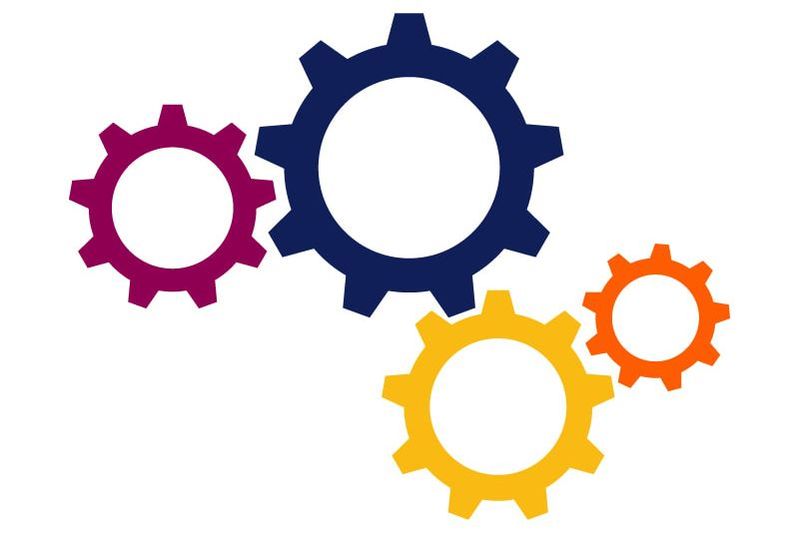

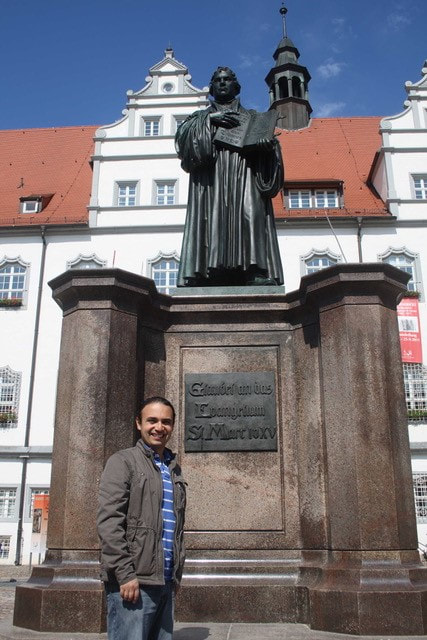
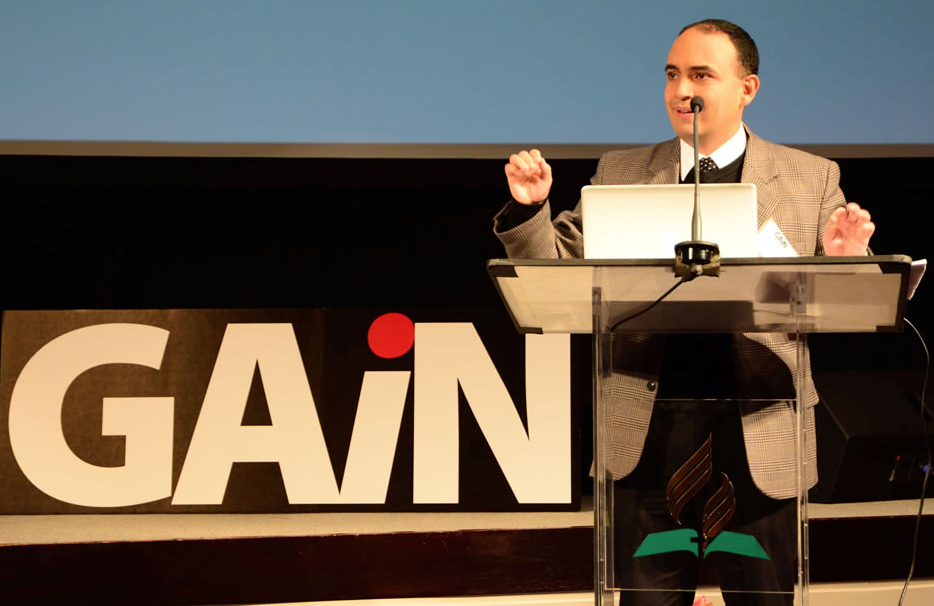

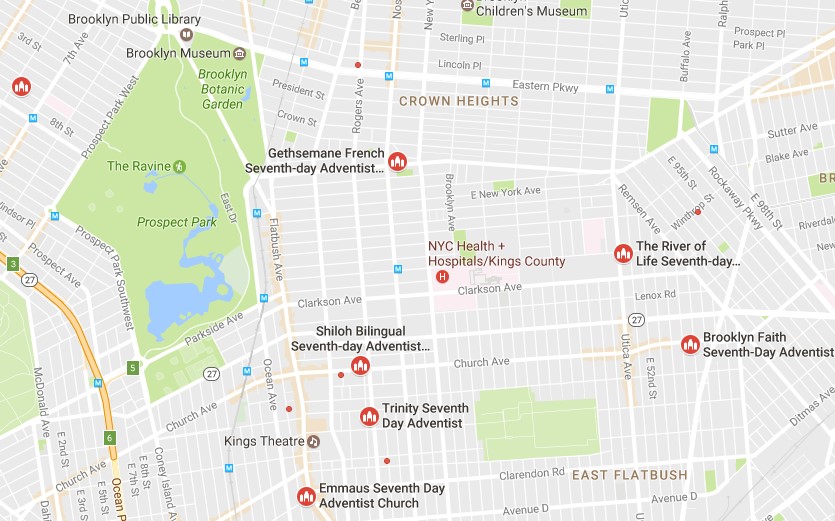

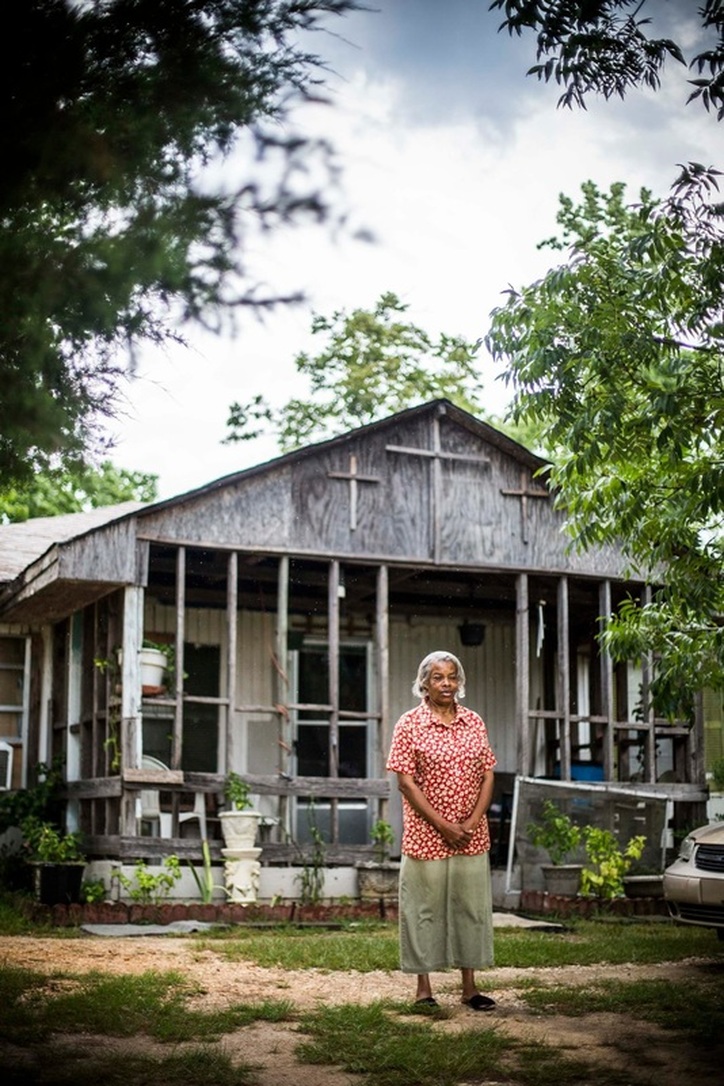
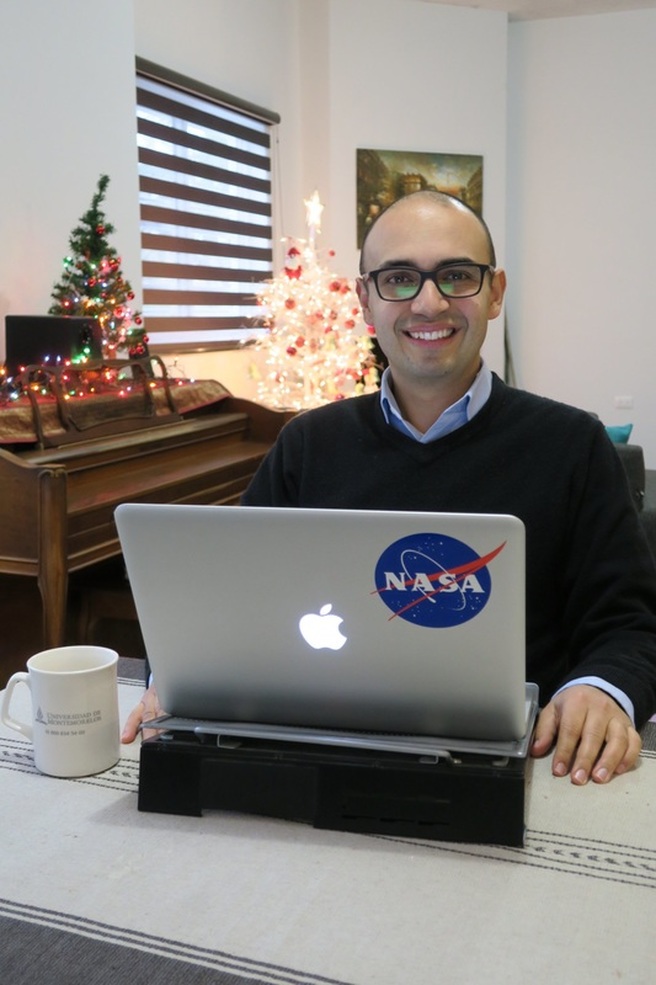
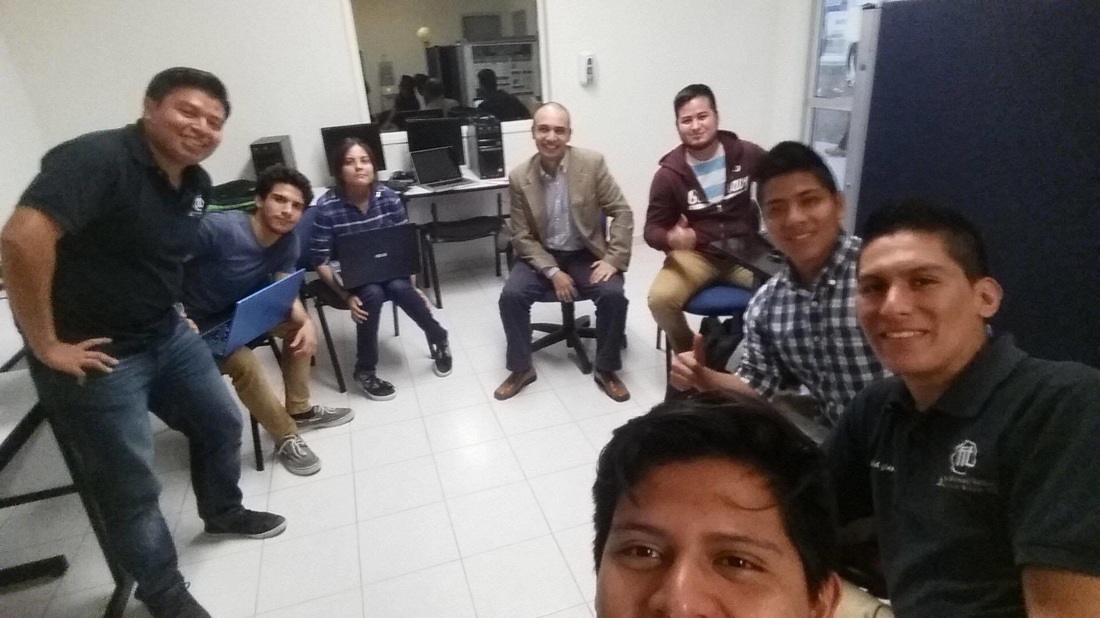
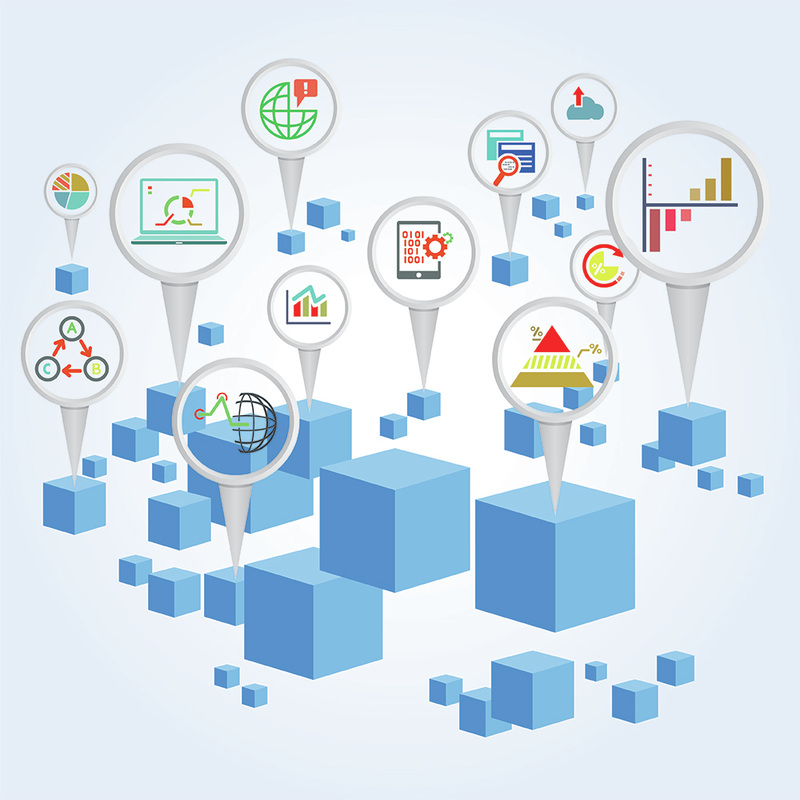
 RSS Feed
RSS Feed